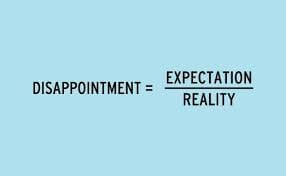Outstanding customer service can make you bulletproof to competition and lower prices in the building materials industry. Whenever I interview architects, builders or contractors they each can relate two kinds of customer service stories from manufacturers.
The most frequent story is like the following, where a problem that could have been resolved in a reasonable fashion spins out of control and probably diminishes the chance for future business. In addition to needlessly upsetting your customer, they are very likely to share their poor experience with your company online for many others to read.
Contractors, builders, and architects know that there will be problems. Hopefully not too many or too often, but they know stuff happens. The key is how you manage problems. I have found that the building materials companies who rise to the occasion, when there is a problem, are rewarded with future business.
Here is a story from a friend of mine, Melinda Goodman, who is a Managing Partner at Full Tilt Marketing. This is a story of what happened to her when she was building her new custom home. Even though she is a consumer that this company will probably never hear from again, I frequently hear stories exactly like this from repeat customers like architects, builders, and contractors.
How your company treats one customer says something about how they treat all customers.
The Power of Managing Expectations
Indulge me while I tell my story as an example. Here at FullTilt Marketing, I have my day job taking care of clients, writing copy for press releases, coming up with great angles to help a brand tell its story and concept new campaign ideas. Then I have my second moonlighting job, being the general contractor for our new home build.
First, I’ll tell you, the only really exciting part of building a new home is the part when you decide to do it. Then, it’s all downhill from there. Ask me again when we’re done and maybe I’ll feel differently.
We’ve had a few problems.
We are building a custom home on our own lot. This isn’t a builder’s home in a cookie cutter subdivision and it’s not a tried and true plan, it’s custom remember. I expect a few things to go wrong, and they do. In March as our rough construction was coming to a close and the windows were in, the last step of rough construction was installing the patio doors (four sets in all). I got a call early in the AM saying the doors were too big, but they had a suggestion for modifying the opening, could I get the inspector to stop by and approve the modifications. Sure no problem. An annoying change, a little more time and some more dollars in labor, but manageable. (P.S. the doors were three inches bigger than what was ordered). They managed to reframe all of the openings and get the two upper sets of doors in that day. I stopped out to look at things that night and discovered that the doors being too large was not the only issue, they also were made wrong. They were not double open French doors, just a center fixed single hinge. (Insert cuss words here).
I immediately called our sales rep
I immediately called our sales rep and he said he’d pull the paperwork and come out in the morning and look at everything. He did and he acknowledged they were wrong and he would go back to the manufacturer and get new ones ordered. Two days later the sales rep tells me new doors have been ordered, they are on a rush order and they will make everything to the size and spec that were ordered. He told me the manufacturer also agreed to pay for the additional labor to reframe and re-install. Two weeks pass, four weeks pass, six weeks pass and no doors. Week seven we get confirmation doors are almost done. I tell our sales agency to give me a delivery date and get us on his install schedule because our rough contractor is now unavailable because he’s on other jobs. I was told they were too busy to help with install (despite the fact that seven weeks earlier he told me they would help if our contractor was unavailable). I’m also told that the manufacturer has now decided they aren’t going to be responsible for any labor charges since they are remaking the doors. (Insert slamming down of phone and more cussing.)
He’s pretty much telling me to shut up and take what I can get
Week eight and I get a call from the owner of the sales company. Now he’s the one that will be dealing with my account instead of my sales rep. And let’s just say by dealing with me, he’s pretty much telling me to shut up and take what I can get, it’s not his problem and then some. Because he doesn’t make the doors and it’s not his fault, etc. (It was truly amazing customer service,insert snarkiness here). But rest assured, my doors would be delivered Monday (week 9). By the way, the doors only took 6 weeks the first time.
On Sunday afternoon I got a text message that the delivery truck was broke down and the doors would be delivered Tuesday and my delivery window was 7 am – 12 pm. I was at the jobsite at 7 am and I sat in my car working until 11:30 with no delivery or sign of life. When I called the sales company they said they didn’t know anything. I got a call from them 30 minutes later saying it would be another 90 minutes. 90 minutes passed and still nothing. I then called them again and demanded to be given the name of the manufacturer and source of delivery to handle things myself. They agreed but said it wouldn’t matter, that I wouldn’t be able to solve the problem. (Clearly they underestimate me.)
So I started making calls.
First, I learned that my sales agency had brokered the doors. They went through a wholesaler to buy from the manufacturer so they were dealing with a wholesaler, not the actual manufacturer. I did call the wholesaler and I learned more in 30 minutes than I had learned in a week, including the fact that the doors had never even been loaded or slotted for delivery that day. Secondly, the sales agency had been horrible to them and they were tired of dealing with them and finally, they were the ones fighting with the manufacturer and trying to resolve the issue. Over the course of the next two hours of working with the wholesaler and their team I did manage to get my doors scheduled for delivery first AM on Wednesday, unwind the fiasco that the sales company had created, and learn that the doors were now made correctly, but still the wrong size. Ugggghhhh, but time being of the essence, we’d do our best to reframe and make them work.
When the doors were delivered and installed that same day (by new contractors I hired), I felt relieved and ready to move on. But because I believe in learning from everything, I reflected on the events and subsequent outcome to see what the takeaway was. What became blatantly clear is the need to manage expectations.
We serve others
In all of our businesses, regardless of what we do – we serve others, and things go wrong. We have a responsibility to communicate with our clients and customers clear expectations and outcomes. What happens more often than not is customer service reps, project managers, sales reps, etc. are fearful of what will happen if they tell the truth. They don’t want to make a customer angry or disappointed or even lose that customer, so they tell them what they think they want to hear.
Back when I was working in sales of perishable products things went wrong, sometimes horrifically wrong. I always assessed the situation, took a deep breath, picked up the phone and told the customer what happened, why and how I was going to fix it and how long it would take. My customers would vent, and I’d let them. When they were done, I’d complete the work I promised to do and keep them up to date. On the other hand, many of my co-workers would take the approach of sugar coating the situation and finding excuses that drug out the outcome but made the customer feel better in the moment until the situation had spiraled so far out of control everyone was mad and they lost the customer. I never lost a customer. In fact, I had one large retailer tell me that he liked to do business with me because I was always honest when there was a problem. He could handle the truth and work with the truth. If he knew what was really going on, he could help solve the problem to prevent larger issues. That feedback stuck with me and was reaffirmed this week when I was dealing with this problem.
Managing expectations applies in every aspect of our lives. It applies to our relationships with friends, family, spouses, etc. It applies to our business dealings with clients and customers. The best form of customer service is managing the expectations.
My sales company failed me when they failed to manage my expectations. They promised me a rush order that was never going to happen. They promised me labor reimbursement that was never going to happen, and they promised me a delivery they didn’t know how to manage or control. Had they told me on day two that the doors would probably take around eight weeks I would not have been frustrated starting in week three? Had they told me in week one that they had used a wholesaler and not went directly to the manufacturer I would have known that any labor reimbursement was a crap shoot unless I got it directly from the sales agency.
There’s enough second guessing in life and business and enough things that go wrong even under the best of circumstances so don’t let coulda, woulda, shoulda be the outcome because you didn’t manage expectations. Relationships are easy to manage when things go right. You look like a customer service hero when things go right. The difference between good and bad companies is how they manage customer expectations when things go wrong. Just tell people the truth up front and together build a collaborative working partnership that always focuses on the best outcome for everyone.
Written by Melinda Goodman
Managing Partner
Melinda@FullTiltMarketing.net
A few final thoughts
A commitment to customer service starts at the top. It has to be part of the culture of the company. Where Melinda has had experiences with people not wanting, to be honest and straightforward with customers, more frequently I find another type of problem.
More customer service failures
A distributor has been awarded a large order for metal connectors. He places the order in plenty of time. As the shipment date arrives, he is told that a small quantity of one product is out of stock and won’t be shipped on time. The parts came from China would take awhile to arrive. The manufacturers attitude was, “Sorry nothing we can do about it.”
The distributor risked losing the entire large order and upset a customer because of few small pieces of metal. The manufacturer salesperson knew that there was nothing he could do. The focus is on reducing costs and improving profits and not improving or even maintaining customer satisfaction. I couldn’t understand why the manufacturer didn’t spend a few dollars and air freight the parts in.
In another situation, a contractor ordered some loading bay doors for a commercial project. The doors arrived in time to be installed the next day. The problem was that the doors were damaged in shipment. When the contractor called the manufacturer, he was told to file a claim with the trucking company and place a new order. The manufacturer had no empathy for the contractor or their customer.
The contractor told me that while he prefers this manufacturer’s products, he now gives some of the business to other manufacturers who don’t make as good of a product but are more reliable and responsive.
Another example is from a window dealer who told me that a manufacturer he prefers, has the worst customer service he has ever seen. If he needs a simple part, whether it was his error or the manufacture’s they refuse to do anything to resolve the issue. Everyone leaves at quitting time, so there is no one to contact after 5 pm. He does have the cell phone of his sales rep, but there is no one for his sales rep to call.
The dealer has toured the manufacturers plant he knows that the part he needs is in a bin a short walk from the customer service people. They are not allowed to walk over, get the part and drop it in a FedEx envelope. How hard could that be?
The problem is the processes that manufacturers use, have been designed to optimize profits and don’t allow for anything that doesn’t fit their system.
Rather than a resistance to telling the customer the truth, I find that the employee is powerless to help the customer. In fact, they could lose their job by helping the customer.
I have even heard employees of these building materials companies be brutally honest with their customers by telling them.
“I’m sorry, but I’m not allowed to help you.”
“We used to care about our customers but now everything is driven by spreadsheets and processes that don’t allow us to help you.”
“It would be so easy for me to solve your problem, but I would get in trouble.”
“I have to fill out a request form and submit it to my boss who will have to submit it to his boss who will take several days. They will probably have several more questions for you as they will probably suspect that this problem is your fault.
The problems are you can’t measure the benefits of excellent customer service, so our financially driven companies ignore it.
I don’t know this for sure, but the way I consistently hear positive comments about Marvin Windows, I suspect that they have very good to excellent customer service.
Two other companies to learn from are Zappos online retailer who’s simple direction to all employees, “Make our Customers Happy.” And their employees are empowered to make people happy by making decisions themselves, on the spot.
The other company to learn from is Zinegerman’s Deli and Restuarant in Ann Arbor. They have taken customer service beyond”Make our Customers Happy” to “Do The Right Thing” You can read more about it here.
The other thing they do that more building materials companies do is to raise a red flag whenever a customer has a problem. Everyone from the top on down is aware of the problem and is focused doing whatever it takes to resolve it. The process they follow is:
- Acknowledge
- Apologize
- Make it Right
- Thank them
- Document it
Your customers are receiving better and better customer service in their personal lives, and they don’t give you a pass because it is a business to business relationship.
I have heard too many MBA’s who think they can design their processes, so there aren’t any problems. They don’t take the time to consider that even the best system has errors.
Here’s what building materials companies need to do
- Acknowledge that customers will have problems and be committed to resolving them as fast as possible.
- Empower employees, at all levels, to decided how to resolve the issue and to act on it.
- Make everyone aware of problems and rather looking for someone to blame, use these as opportunities to learn and outperform your competition.
Every building materials company I know wants to grow their sales. They will spend more on marketing when shifting the same money to improve customer service may get them more sales as a lower cost.
They have not trouble running an expensive ad that may get no results or wasting money on a trade show, but spending a little to resolve a customer’s problem is a bad thing?
Your greatest source of growth is from your existing customers. Why not make it easier for them to be successful with better customer service? Why not be finding ways for your customers to tell new stories about how far you went to solve a problem?
Here’s another article I wrote about how customer service can make you bulletproof to competitors and lower prices.
Subscribe To My Newsletter
If you like what I say, sign up for my newsletter here and get my weekly newsletter every Sunday night.
Thanks for the following comments. I’d like to hear your feedback and suggestions on how to sell architects.
“Great article!”
Dale Kruse
Northwestern building envelope products understudy
Kruse Enterprises
“Amen!”
Andy Solomon
Director Of Sales Training
Associated Materials, Inc.
“It is all about customer service”
Bryan Schwartz
President
Trim-Tex Inc.











